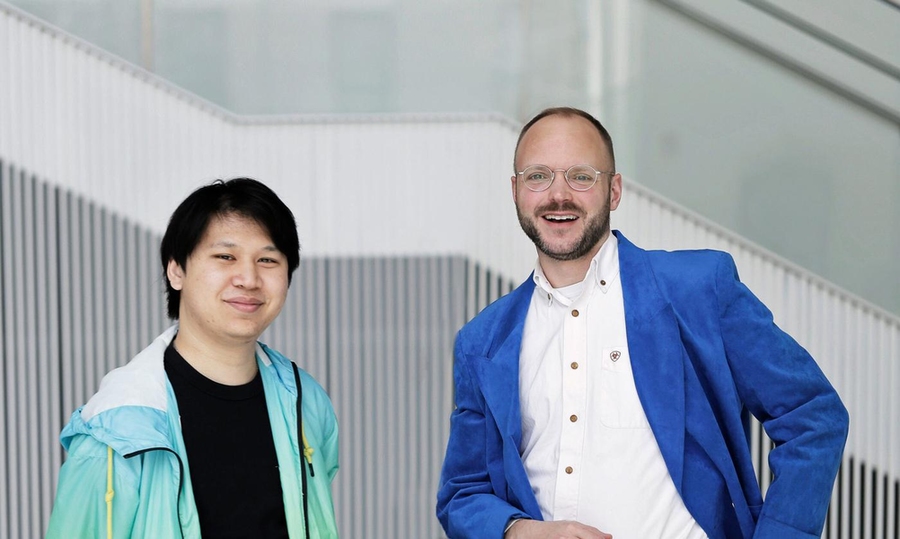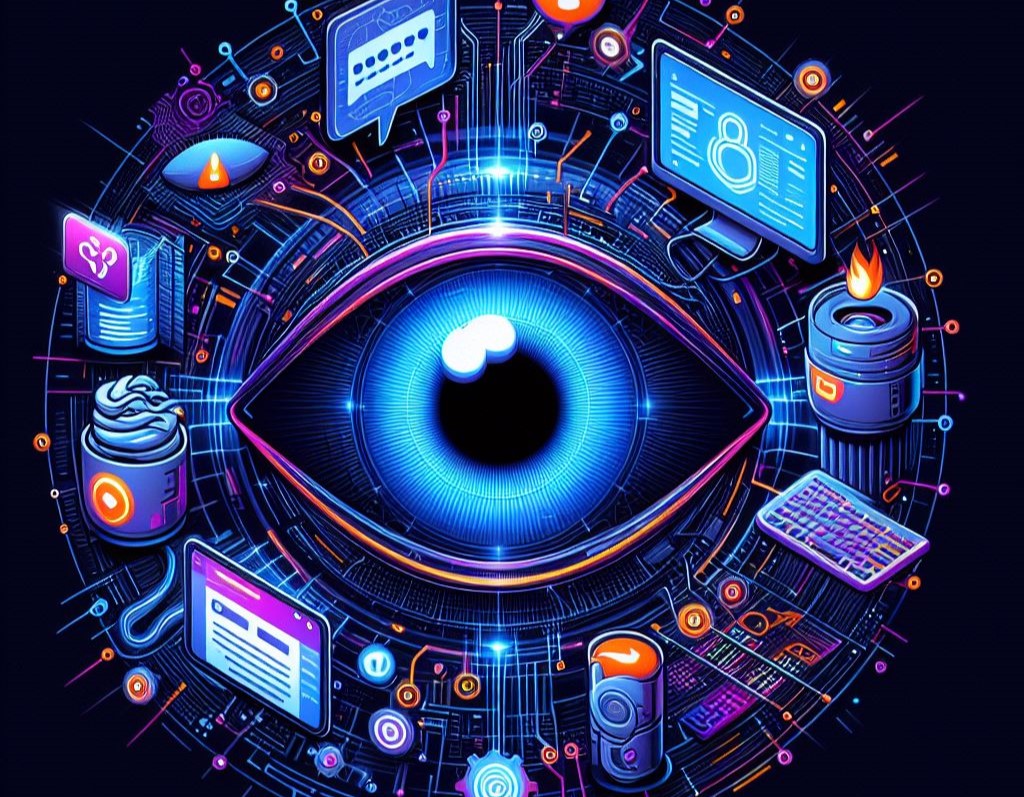The new “AI Comes Out of the Closet” system aims to integrate artificial intelligence and LGBTQIA+ support
“AI Comes Out of the Closet” is an online system based on large learning models (LLMs) that uses artificial intelligence-generated dialogue and virtual actors to simulate complex social interactions.
These simulations allow users to test and refine their approach to LGBTQIA+ activism in a safe and controlled setting.
Lead author D. Pillis, an MIT graduate student in media arts and sciences and research scientist in the MIT Media Lab’s Tangible Media Group, describes the research as both personal and political, as it is rooted in a landscape in which LGBTQIA+ people continue to navigate the complexities of identity, acceptance, and visibility.
The need for advocacy simulations that address the current challenges facing the LGBTQIA+ community and offer inventive solutions that harness the power of AI to foster understanding, empathy, and support is what drives Pillis’ work.
This project aims to test the idea that, when used intelligently, technology can be a force for good in society, bridging gaps between varied perspectives and building a more inclusive world.
Pillis emphasizes the important, yet often neglected, relationship between the LGBTQIA+ population and the advancement of AI and computing. He claims, “AI has always been queer.
Computing has always been queer,” emphasizing the contributions of LGBT people to the profession, beginning with the narrative of Alan Turing, a pioneering figure in computer science and artificial intelligence who faced legal penalty — chemical castration — for his homosexuality.
Pillis contrasts Turing’s experience with today’s acceptance of OpenAI CEO Sam Altman’s openness about his LGBT orientation, demonstrating a broader shift toward inclusivity. This progression from Turing to Altman emphasizes the role of LGBTQIA+ people in creating the field of AI.
“There’s something about queer culture that celebrates the artificial through kitsch, camp, and performance,” Pillis says.
AI embodies the manufactured and the performative, which is highly resonant with queer experiences and expressions. Through this lens, he argues for recognizing the queerness at the heart of AI in its history and very nature.
Pillis discovered a colleague in Pat Pataranutaporn, a graduate student at the Media Lab’s Fluid Interfaces section.
Their collaboration began in the Media Lab’s atmosphere of multidisciplinary exploration, where Pataranutaporn’s work on AI characters intersected with Pillis’ concentration on 3D human simulation.

Taking on the task of translating text to gesture-based interactions was a significant technological barrier. Pataranutaporn’s study focuses on building conditions for people to thrive rather than only solving problems to understand how AI might help humans flourish across dimensions of “wisdom, wonder, and well-being.”
Pataranutaporn’s focus in this project was on creating dialogues that generated virtual interactions. “It’s not simply about increasing people’s effectiveness, efficiency, and productivity. It is about how you may help the numerous facets of human growth and development.
Pattie Maes, the Germeshausen Professor of Media Arts and Sciences at the MIT Media Lab and project advisor, says, “AI provides excellent new prospects for assisting human learning, empowerment, and self-development.
I am delighted and excited that this effort promotes AI technologies that benefit and enable individuals and humanity rather than focusing on AGI [artificial general intelligence].
We are addressing critical workplace challenges
The fact that over 46 per cent of LGBTQIA+ workers have encountered some unjust treatment at work, ranging from being overlooked for employment prospects to being harassed, emphasizes the need for this research.
Approximately 46 per cent of LGBTQIA+ people feel obliged to conceal their identity at work owing to fears of stereotyping, making coworkers uncomfortable, or endangering professional relationships.
The computer business, in particular, creates a problematic environment for LGBTQIA+ people. According to data, 33 per cent of homosexual engineers believe that their sexual orientation is a hindrance to career advancement.
Over half of LGBTQIA+ employees report experiencing homophobic jokes at work, emphasizing the need for cultural and behavioural change.
“AI Comes Out of the Closet” is an online study to evaluate the simulator’s impact on developing empathy, understanding, and advocacy skills for LGBTQIA+ problems.
Participants were immersed in an AI-generated environment that replicated real-world scenarios that LGBTQIA+ people can encounter, emphasizing the dynamics of coming out in the workplace.
Engaging in the simulation
Participants were randomly allocated one of two interaction styles with the virtual characters: “First Person” or “Third Person.” The First Person mode immersed users in the experiences of a character navigating the coming-out process, establishing a more personal connection with the simulation.
The third-person mode allowed viewers to take on the role of an observer or director, affecting the tale from an outside perspective, akin to the interactive audience in Forum Theater. This approach was intended to investigate the effects of immersive vs observational encounters.
Participants were directed through a series of simulated exchanges in which virtual characters, driven by powerful AI and LLMs, responded realistically and dynamically to the participants’ inputs.
The scenarios depicted critical times and decisions, highlighting the emotional and societal difficulties of coming out.
The study’s scripted scenarios established a framework for the AI’s interactions with people. For example, in one scenario, a virtual character may reveal their LGBTQIA+ identity to a coworker (represented by the participant), who then guides the conversation using multiple choice responses.
These options are intended to depict a variety of reactions, from supportive to indifferent or even dismissive, allowing the study to capture a wide range of participant views and answers.
Following the simulation, participants were asked questions to assess their empathy, compassion, and comfort with LGBTQIA+ advocacy.
These questions sought to reflect on and forecast how the simulation would influence participants’ future behaviour and thoughts in real-world circumstances.
The results:
The study discovered an exciting variation in how the simulation increased empathy levels in the third-person and first-person modes.
The study found that in the Third Person mode, where participants watched and supervised the event from the outside, they had more empathy and understanding for LGBTQIA+ people in “coming out” circumstances.
This shows that seeing and influencing the scenario allowed them to understand the perspectives of LGBTQIA+ people better.
However, the First Person mode, in which participants acted as characters in the simulation, had no significant effect on their empathy or ability to help others. This distinction demonstrates that our perspective may alter our reactions to simulated social events and that being an observer may be preferable for improving empathy.
While the rise in empathy and sympathy in the Third Person group was statistically significant, the study also identified areas for future exploration.
For example, the simulation’s impact on participants’ comfort and confidence in LGBTQIA+ advocacy scenarios yielded mixed results, highlighting the need for further investigation.
The study also acknowledges the limits of its methods, such as reliance on self-reported data and the controlled nature of the simulation settings. While necessary for the study’s first inquiry, these characteristics indicate topics for further research to validate and expand on the findings.
Future research could investigate other situations, different participant demographics, and longitudinal studies to determine the simulation’s long-term impact.
“The most compelling surprise was how many people were both accepting and dismissive of LGBTQIA+ interactions at work,” Pillis states.
This attitude reflects a more significant trend in which people accept LGBTQIA+ people but do not fully comprehend the significance of their experiences.
Possible real-world uses
Pillis sees numerous applications for simulations, such as the one developed for his research.
In human resources and corporate training, the simulator could be used to promote inclusive workplaces.
Companies that allow employees to explore and comprehend the intricacies of LGBTQIA+ experiences and activism can create more compassionate and supportive work environments, improving team cohesion and job satisfaction.
For schools, the tool could provide a novel approach to teaching empathy and social justice, incorporating it into curricula to better educate kids for the varied world they live in. For parents, particularly those with LGBTQIA+ children, the simulator could provide valuable insights and ideas for guiding their children through the coming-out process and beyond.
Healthcare personnel could also benefit from simulator training to better understand LGBTQIA+ patient experiences and improve their treatment and relationships.
Mental health providers, in particular, might use the tool to train therapists and counsellors on how to treat LGBTQIA+ clients better.



